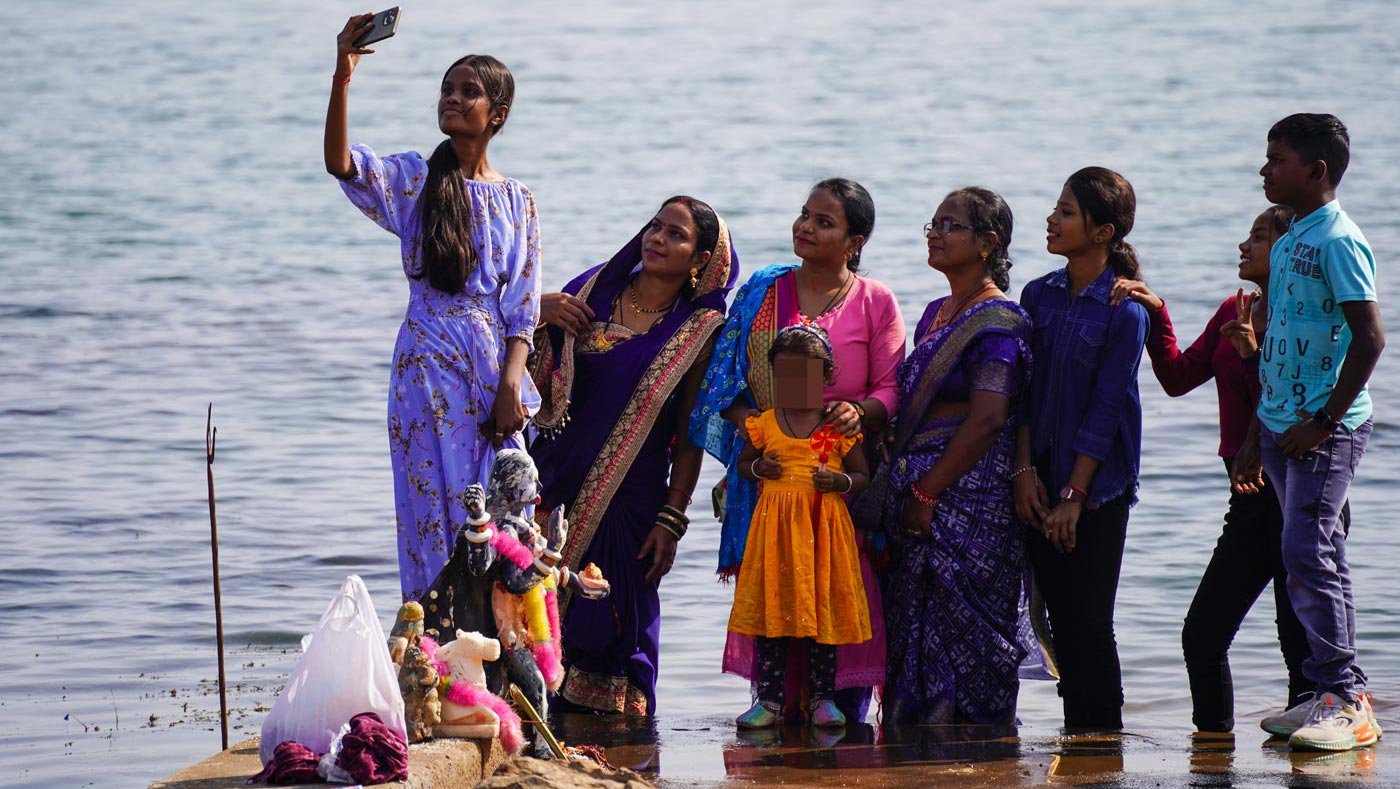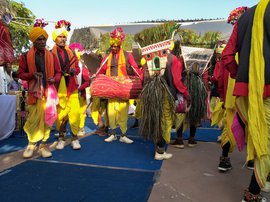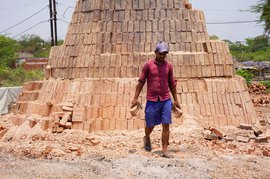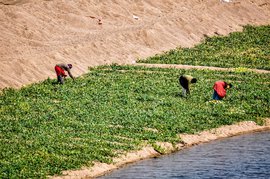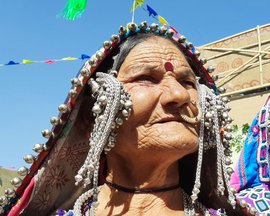Gods sometimes travel with their devotees. At least Ma Angarmoti has.
Around 45 years ago, the goddess lived in the village of Dhay-Chanwar. “Ma Angarmoti used to reside [in the place] between two rivers – Mahanadi and Sukha nadi ,” says Ishwar Netam, a Gond Adivasi who is around 50 years old and is the main priest or baiga of the tribal goddess.
Despite being moved, Ma Angarmoti’s popularity hasn’t dimmed – 500 to 1,000 devotees from the village and elsewhere still flock to the site of her temple every day. She hasn’t lost her friends either. Every year, on the first Friday after Diwali, Ma Angarmoti invites the deities from neighbouring villages for an annual celebration. The fair is named after the deity but also known as Gangrel madai , a reference to the name of the village and also the dam nearby.
“We have been celebrating this
madai
[fair] in almost every tribal village since the time of our ancestors,” says Vishnu Netam, tribal leader from the Gond community and also a member of the team that organises the fair every year during this time in the village of Gangrel.
“
Madai
is part of our traditional tribal culture,” he adds. Local residents as well as people from outside the village visit the fair, offering flowers to the gods in gratitude for the good harvest and seeking blessings for the year to come. This
madai
is one of around 50 that are organised in the district every year. It is the first of a series of madai held in this district of the central Indian state.
Local residents as well as people from outside the village visit the fair, offering flowers to the gods in gratitude for the good harvest and seeking blessings for the year to come
In 1978, a dam was built on the Mahanadi river for irrigation and to supply water to the Bhilai steel plant. However, the dam, officially known as Pandit Ravishankar Dam, spelled trouble for the deity and the villagers who worshipped her.
During its construction, the subsequent flooding forced the residents of Chanwar village to leave their homes and relocate to another area. “Around 52-54 villages were submerged,” says Ishwar, “and the people were displaced.”
And so they left but with their goddess, and settled in Gangrel in Dhamtari, 16 kilometres from the dam.
Almost half a century later, the dam has become a popular tourist destination, but many of the displaced villagers are still waiting for compensation from the government.


Left: The road leading to the madai. Right: Ishwar Netam (third from left) with his fellow baigas joining the festivities


Left: Wooden palanquins representing Angadeos are brought from neighbouring villages. Right: Items used in the deva naach
The day-long festivities at the madai begin in the afternoon and continue till evening. The goddess is placed close to the dam and worshippers begin to arrive in the morning. Some of them will make a detour for a photo shoot or a quick selfie at the dam.
The road leading up to the site of the madai is lined with shops selling sweets and snacks. Some of these shops are old while some have come up just for the festival.
By the time the madai is officially underway, almost five to six thousand people have arrived from near and far. Nilesh Raichura, a resident of Dhamtari town, has visited many across the state. “I have visited madais of Kanker, Narharpur, Nagri-Sihawa, Charama, Pakhanjur and many more places,” he says, “but there is something different about Gangel madai .”
Amongst the worshippers at the madai here are women who have not been able to conceive. “Childless women come to take blessings from Ma Angarmoti. Many of them have had their wishes come true,” says Ishwar Mandavi, a tribal leader and activist.

The road leading up to the site of the
madai
is lined with shops selling sweets and snacks


Left: Women visit the madai to seek the blessings of Ma Angarmoti. 'Many of them have had their wishes come true,' says Ishwar Mandavi, a tribal leader and activist. Right: Worshippers come to the madai with daangs or bamboo poles with flags symbolising deities
We meet women who have travelled here from places near and far – Raipur (85 kms), Janjgir (265 kms) and Bemetara (130 kms) for instance. They are standing in line, waiting for their turn to be blessed.
“I have been married for five years,” one of them says, “but I am without a child. So, I have come to seek blessings.” The woman, who wanted to remain anonymous, is one of three to four hundred women at the fair who have been fasting since morning.
From other villages, worshippers come with their daangs (bamboo poles with flags symbolising deities) and angas (deities) to take part in the deva naach (dance of the deities). They will carry these poles and wooden palanquins around the area and the devotees will seek the blessings of the gods.
“In these madais ,” says Nilesh, “I can see tribal culture and tribal life from close quarters.”
